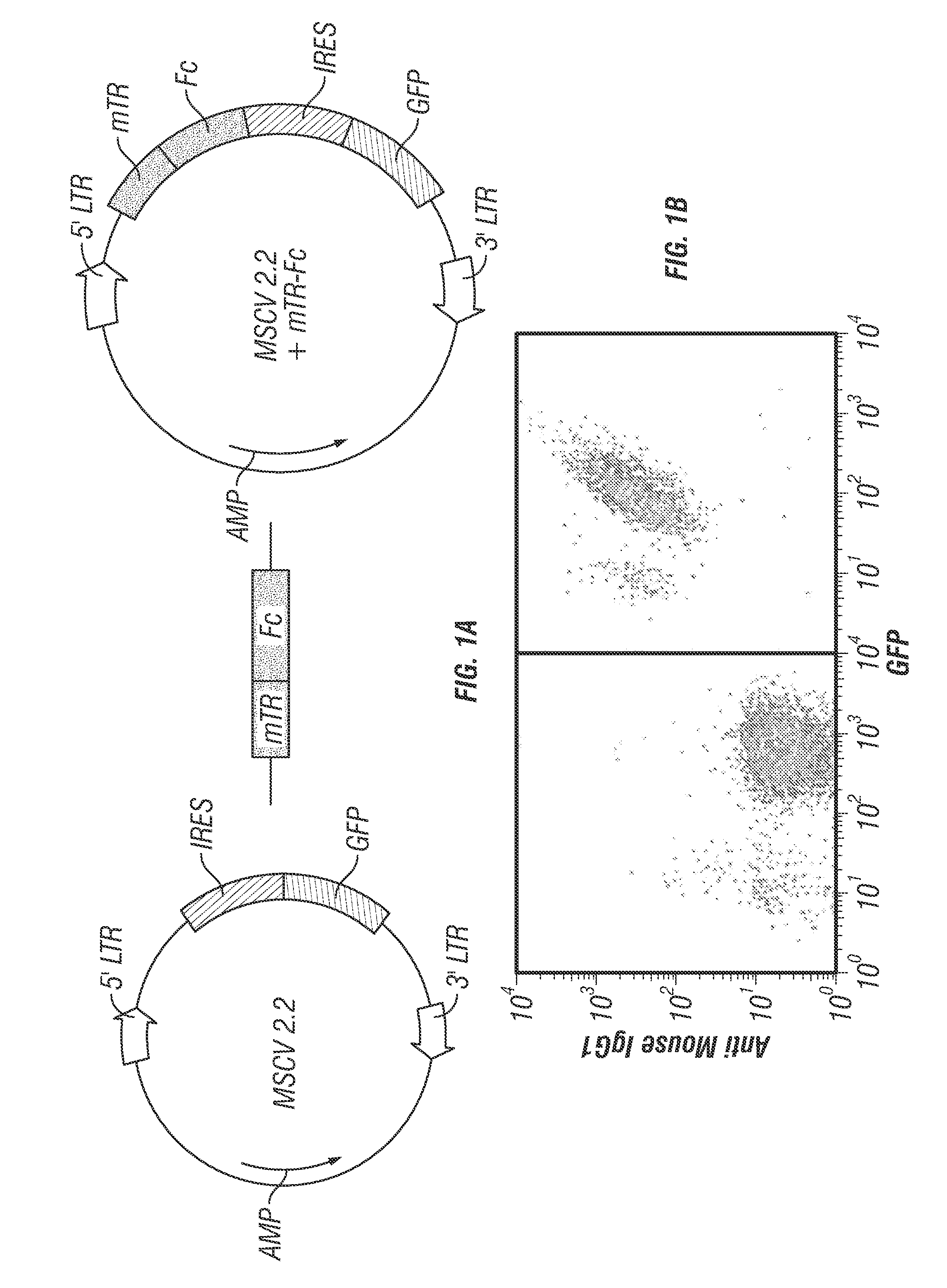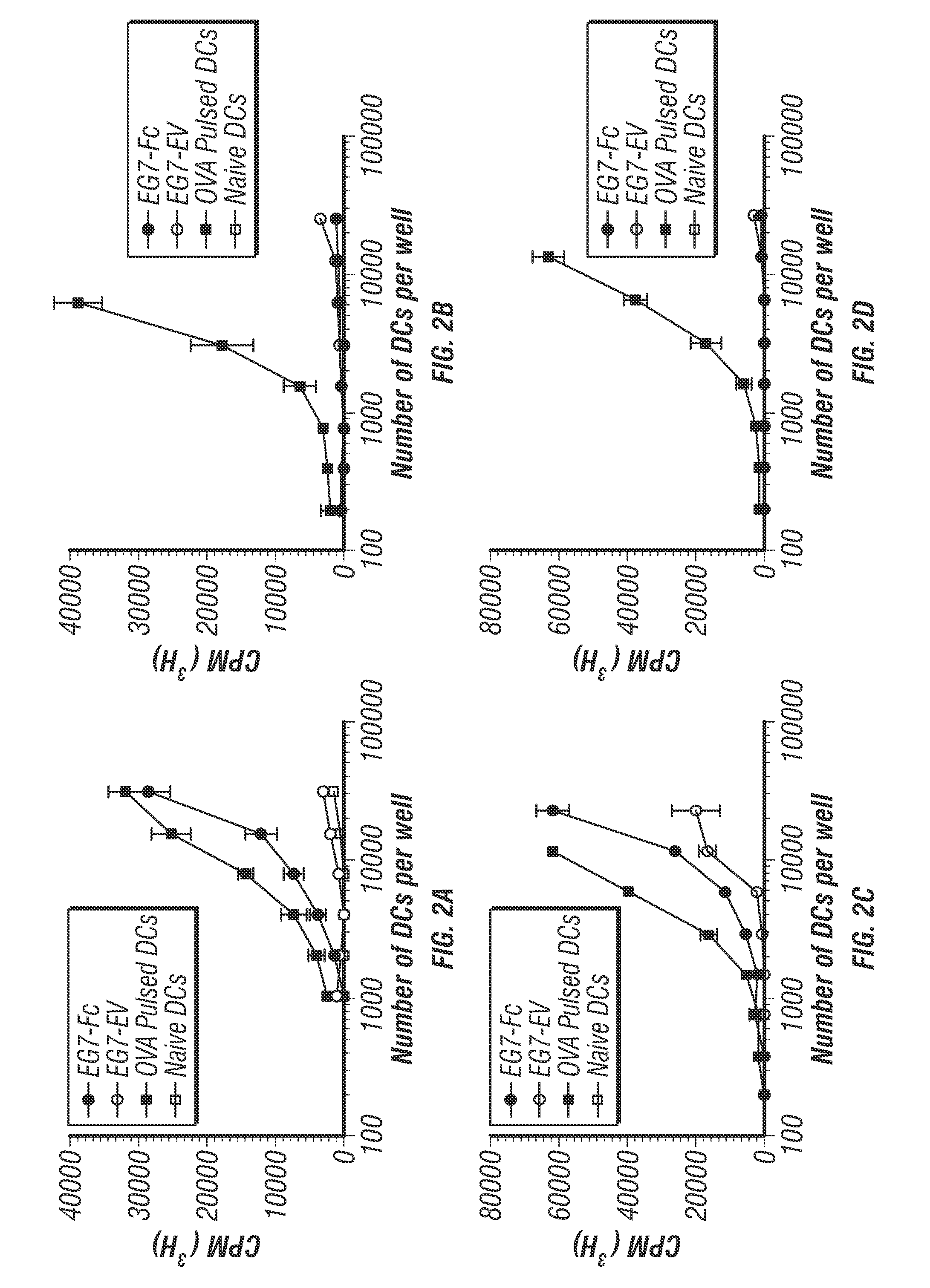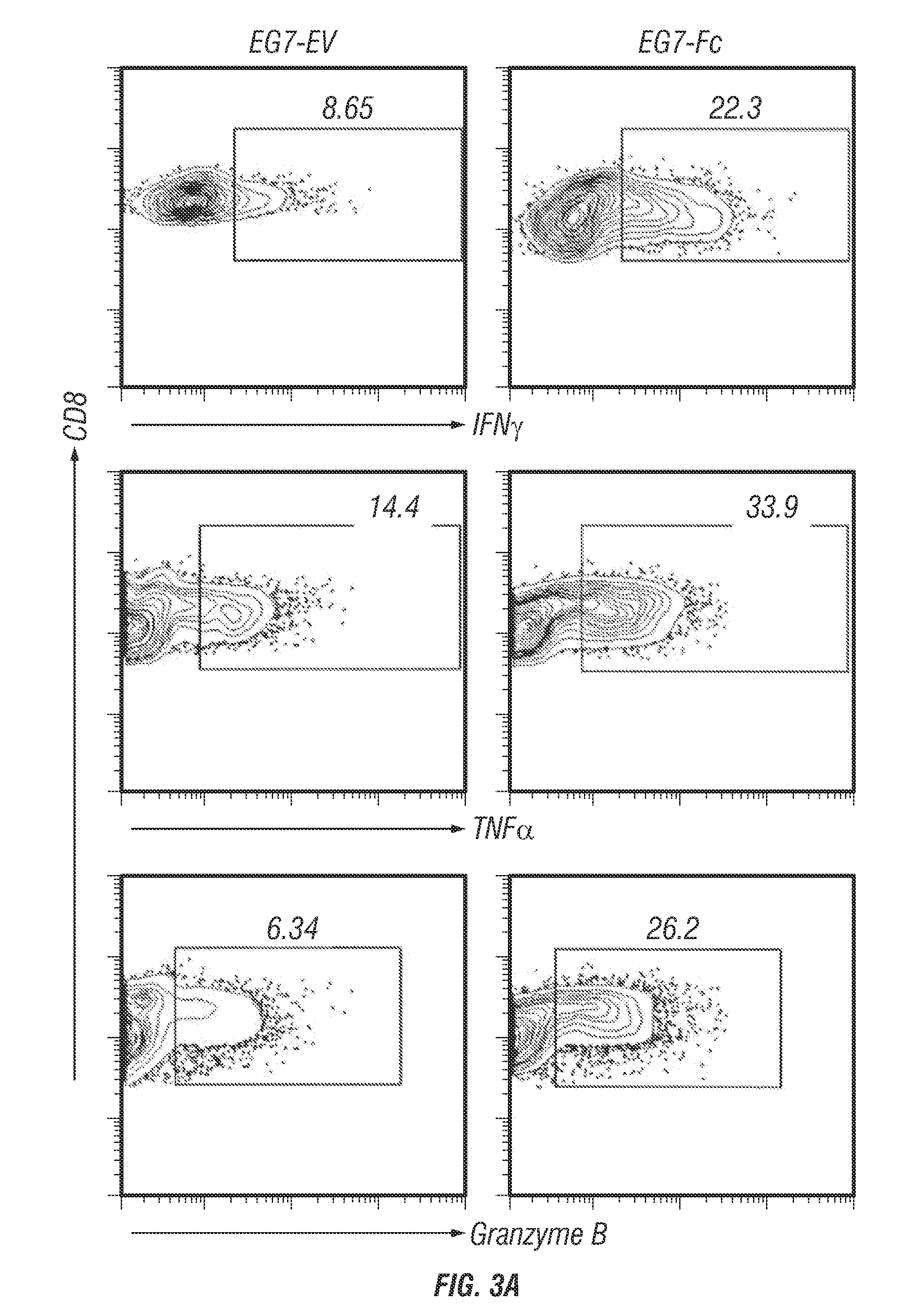TUMORS EXPRESSING IgG1 Fc INDUCE ROBUST CD8 T CELL RESPONSES
a tumor and igg1 technology, applied in the field of medicine, immunology and oncology, can solve the problems of limiting the efficacy of many of these therapies, affecting their ability to efficiently, and limiting their efficacy, so as to inhibit primary tumor growth, induce primary tumor regression, and inhibit metastasis
- Summary
- Abstract
- Description
- Claims
- Application Information
AI Technical Summary
Benefits of technology
Problems solved by technology
Method used
Image
Examples
example 1
Materials and Methods
[0192]Mice.
[0193]OT-I and OT-II mice were obtained from Jackson Laboratories (Bar Harbor, Me.) Control C57BL / 6 mice were obtained from the UT Southwestern mouse breeding core facility. Mice were maintained in specific pathogen-free conditions. Mice were used between 6 and 12 wk of age.
[0194]Cell Lines and DCs.
[0195]EG7 cells (ATCC, Manassas, Va.) and murine primary cells were cultured in complete RPMI-1640 supplemented with 10% FCS, 100 U / ml penicillin, 100 μg / ml streptomycin, 2 mM L-glutamine, 10 mM HEPES, and 1 mM sodium pyruvate (all from Sigma). BMDCs were generated from bone marrow progenitors. Cells were harvested from femurs and iliac bones of WT mice, cultured for 5 days in complete RPMI-1640 supplemented with 5% FCS, 100 U / ml penicillin, 100 g / ml streptomycin, 2 mM L-glutamine, 10 mM HEPES, and 1 mM sodium pyruvate (all from Sigma) and GM-CSF. Media was replenished on day 2 and day 4 of culture. Splenic FLT3 ligand induced DCs were obtained as described...
example 2
Results
[0212]Engineering IgG1 Fe-Tagged Tumor Cells.
[0213]To direct trafficking of tumor cells and their antigens to Fc receptors on dendritic cells, the inventors expressed the Fc region of IgG1 on the surface of the tumor cell line EG7. The CH2 and CH3 domains (residues 237 to 430) of murine IgG1 Fc can be efficiently expressed on the cell surface in reverse orientation by fusing IgG1 Fc with the transmembrane domain of transferrin receptor (Stabila et al., 1998; Takashima et al., 2005). This chimeric protein approach was previously exploited to propagate pseudorabies virus with the Fc portion incorporated into its viral envelope. This modified virus was then used for immunization studies (Takashima et al., 2005). The inventors cloned the murine chimeric IgG1 Fc-transferrin fusion into a retroviral vector (MSCV 2.2) (FIG. 1A) and transduced EG7 cells (Moore et al., 1988) (the murine lymphoma cell line EL4 that expresses the model antigen ovalbumin). The resulting Fc-transferrin ex...
example 3
Discussion
[0225]The lack of effective presentation of tumor specific or tumor-associated antigens to the immune system continues to be a major obstacle in tumor immunotherapy. Known barriers to effective antitumor immune responses include the immunosuppressive tumor microenvironment, lack of cross-presentation of tumor antigen, and blunted effector responses (Pardol, 2012). The inventors present here an approach that targets genetically modified tumors to DCs through transgenic expression of the Fc fragment of IgG1 on the tumor cell surface. Consequently, DC uptake of IgG1-Fc bearing tumors leads to cross-priming of CD8 T cells. In vivo, this approach proved beneficial in promoting shrinkage of pre-existing tumors in mice that were therapeutically “vaccinated” with IgG1-Fc bearing tumor cells. This approach circumvents the requirement for prior knowledge of the tumor antigens that can lead to effective CD8 T cell activation and could have therapeutic potential for a broad spectrum o...
PUM
| Property | Measurement | Unit |
|---|---|---|
| time- | aaaaa | aaaaa |
| delay time | aaaaa | aaaaa |
| delay time | aaaaa | aaaaa |
Abstract
Description
Claims
Application Information
 Login to View More
Login to View More - R&D
- Intellectual Property
- Life Sciences
- Materials
- Tech Scout
- Unparalleled Data Quality
- Higher Quality Content
- 60% Fewer Hallucinations
Browse by: Latest US Patents, China's latest patents, Technical Efficacy Thesaurus, Application Domain, Technology Topic, Popular Technical Reports.
© 2025 PatSnap. All rights reserved.Legal|Privacy policy|Modern Slavery Act Transparency Statement|Sitemap|About US| Contact US: help@patsnap.com



